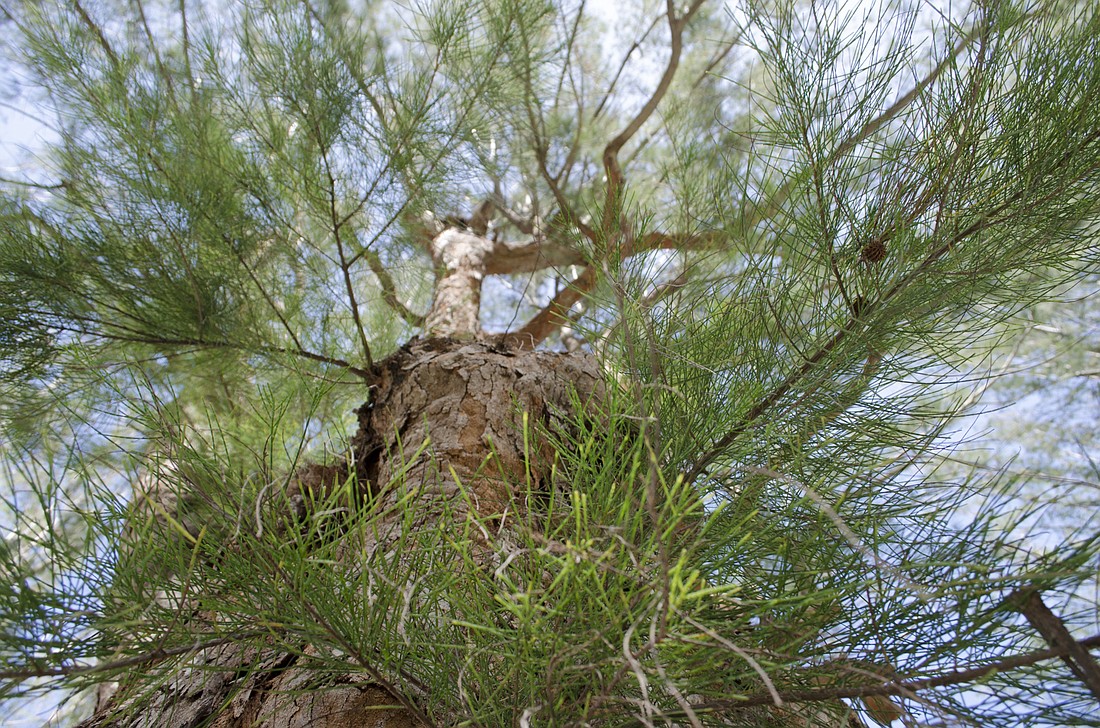- April 28, 2024
-
-
Loading

Loading

WANTED: Australian pines, dead. REWARD: Up to $1,500.
That’s the deal Public Works Director Isaac Brownman proposed to town commissioners — reviving a more than decade-old bounty the town has offered for felling these invasive trees.
But this incentive comes with a few caveats.
Homeowners with trees that could affect Gulf of Mexico Drive may receive up to $1,500 while other residents are eligible for up to $750. Trees must pose a threat to public infrastructure — power lines, roadways and water pipes — if they fall. And there's a limit: three per resident.
And Brownman emphasized the operative phrase: “up to.”
He said the cost for removing these plants can vary based on the tree’s proximity to buildings, power lines and the ability of a contractor to get equipment to where the timber is growing. If a tree costs more to remove than the town bounty, paying the difference is up to the homeowner.
The town last issued such a reward for felling these trees in 2005. It offered $1,000 for trees along GMD and, much like this year’s offer, half that amount for all others.
This program lasted until the Great Recession and ended in community removing 102 trees, Brownman said.
Brownman credits Hurricane Irma for spurring this latest bounty program, much like Hurricane Wilma prompted the initial effort more than a decade ago.
The trees’ shallow root structure and height, combined with their often sandy-soiled locations, make them a hazard in high winds, according to a 2013 state-wide study about managing the invasive species.
So come hurricane season, it's not a matter of if they’ll fall, but when, according to Stephen Enloe, University of Florida associate professor and extension specialist at the Institute of Food and Agricultural Sciences’ Center for Aquatic and Invasive Plants.
Officials are hoping to budget $60,000 annually for this project, double what was earmarked a decade ago.
This money would come from the Commission Contingency budget, a $300,000 fund established for emergencies and unforeseen expenses.
Australian pines, brought to the state in the late 1890s as an ornamental plant, are hard to miss, Enloe said.
They’re taller than most native trees with a spreading, open canopy made up of tufts of short, yellow-green needle-like leaves. The thin, smooth bark is often worn, exposing an iron-red woody tissue. It’s cones are longer than wide and quite uncomfortable to step on.
In the 1950s, John Ringling planted Australian pines along the entire length of Gulf of Mexico Drive — then named after the circus tycoon himself, according to Ralph B. Hunter’s historical reference, “From Calusas to Condominiums: A Pictorial History of Longboat Key.”
The trouble came when the plants shed their leaves, creating a constant fire hazard often sparked — it was thought — by careless cigarette smokers tossing their embers out the window. When firefighters extinguished the blaze, it would often smolder and catch fire again, according to Hunter’s account.
Town Commissioners are scheduled to hear the proposed ordinance Nov. 6 at their regular meeting. Browman said he hopes to offer rewards to residents come 2018.